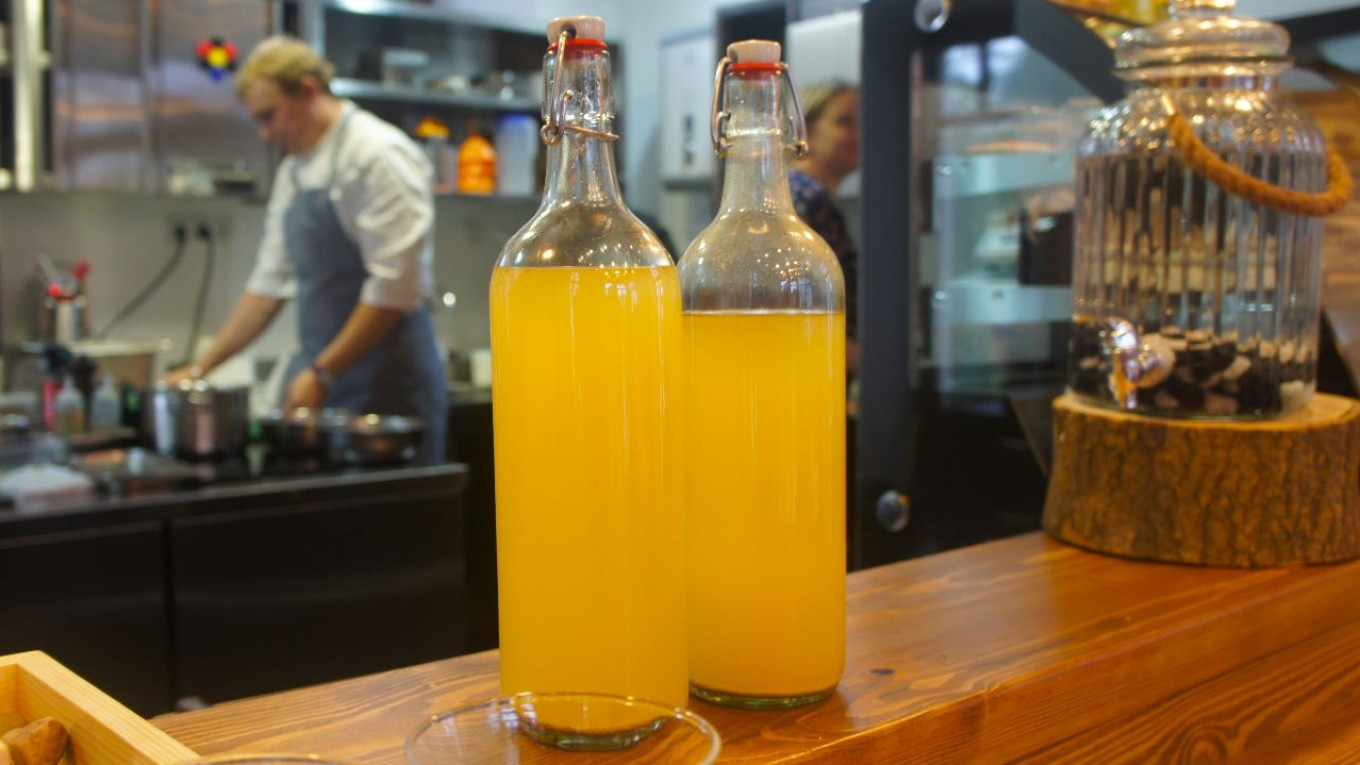There is an old Russian saying: "A spoonful of tar spoils a barrel of mead” — which means that a small defect can ruin something big and beautiful. But wait a minute — could a tiny speck of tar really ruin an entire barrel of mead? Why couldn’t you just spoon it out along with a bit of mead?
It turns out that the old saying is true. The thing is: mead was very different in the old days.
In ancient Russia the most common alcoholic drinks were called meads. To make it they took ordinary honey from bees, diluted it with water and berry juice, added hops, wormwood and herbs. Then they put it in a barrel and buried it underground for several years.
But before burying a barrel of naturally brewed mead, the barrel was covered with tar to keep the wood from letting moisture from the damp earth seep into the mead and spoil it. You can imagine the ire of the head of the family when he dug up a barrel and discovered that tar had seeped into the barrel. Not everyone could make a good barrel, and so many gallons of spoiled mead were discarded.
But why did they bury it? Why didn’t they just nestle it in a big bale of hay or put it in a cellar?
First of all, the temperature and humidity had to be stable throughout the year and maintained without a lot of cost and effort. Russia doesn’t have any caves with the right microclimate, so they found an alternative. In Central Russia the soil freezes down to 1.6 meters (5 feet 3 inches), which means that if you bury the barrel deeper, it won’t freeze in winter or warm up in summer.
Secondly, when the mead ferments pressure builds up inside the barrel. The soil around it compacted and kept the barrel from expanding to dangerous levels.
Finally, there was one more very important consideration. It took a long time for naturally brewed mead to mature, and while it was fermenting, anything could happen: wars, raids, household moves. When it was buried in a secure location, there was some guarantee that it would lie safely and undisturbed.
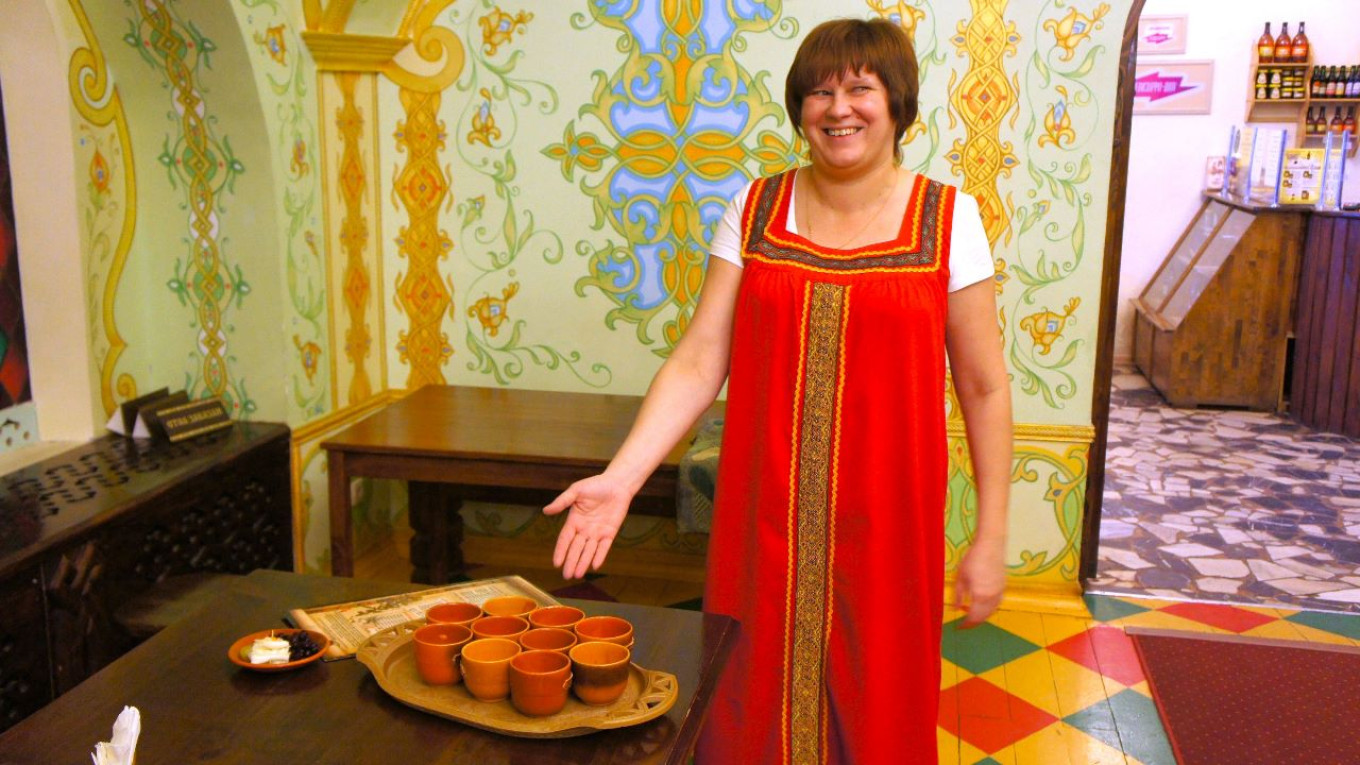
In ancient times there were three types of mead.
The first was naturally brewed mead, which was made with a large amount of honey, a small amount of water and the natural juice of berries (mainly raspberries, cowberries or cherries). This mixture naturally fermented in enormous open vats or barrels — each holding about 120-140 buckets of mead — and then was aged in tarred barrels buried in the ground for 15-20 and even 40 years.
The second was hopped mead. The naturally brewed mead was too slow to mature, so brewers began to look for a way to make a cheaper and stronger drink. To speed up processes in the mixture of honey and berry juice, they immediately added oxymel (previously prepared honey vinegar) and hops before fermentation began. The mead was ready in just three years. Five-year hopped mead was considered mediocre, and 10-year mead was considered excellent.
The third kind was boiled mead. As the population grew and trade developed, the stores of honey that had been used for mead gradually decreased, and mead production had to change to deal with the shortages. In the 10th century, boiled mead was made and consumed by the masses, not the elites of the land. In the Primary Chronicle, it is written that a thousand years ago after the construction of a church, Prince Vladimir ordered that a “great feast be made with 300 cauldrons of boiled mead.” Over time boiled mead gradually replaced naturally brewed mead in wealthy homes.
What was the difference between naturally brewed and boiled mead? To make naturally brewed mead, brewers first diluted the honey with water (1:5, honey to water) and then they boiled to reduce it. Sixteen kilos of honey boiled down to four kilograms of “sour” honey. The evaporated sediment was fermented, then the sour honey was put into a pot with berries. This infusion was fermented in a slow oven, poured into barrels and put in the cellar for aging.
Brewers used more water to make boiled mead – 1:7 (honey to water). The mixture was boiled, starter was added along with herbs and spices. Then it was left to ferment in an open container.

In ancient Russia there were many varieties of mead. In 1602 a foreign ambassador was offered “24 kinds of mead to try to see which he liked best.” The brewing techniques varied as did the different berries, fruit and spices added to the fermenting mead. In the 17th century brewers were even adding exotic foreign spices such as nutmeg, cardamom and cloves.
All the same, Russian berry meads were most widespread: raspberry, cherry, bilberry, currant, blackcurrant, brambleberry, juniper, cherry, and sloe mead.
Today’s mead brewers are trying to reconstruct ancient recipes. In the town of Gavrilov Posad near Suzdal, they have even opened a Museum of Russian National Drinks where its founder, Igor Kekhter, is producing 3-year aged mead according to an ancient recipe.
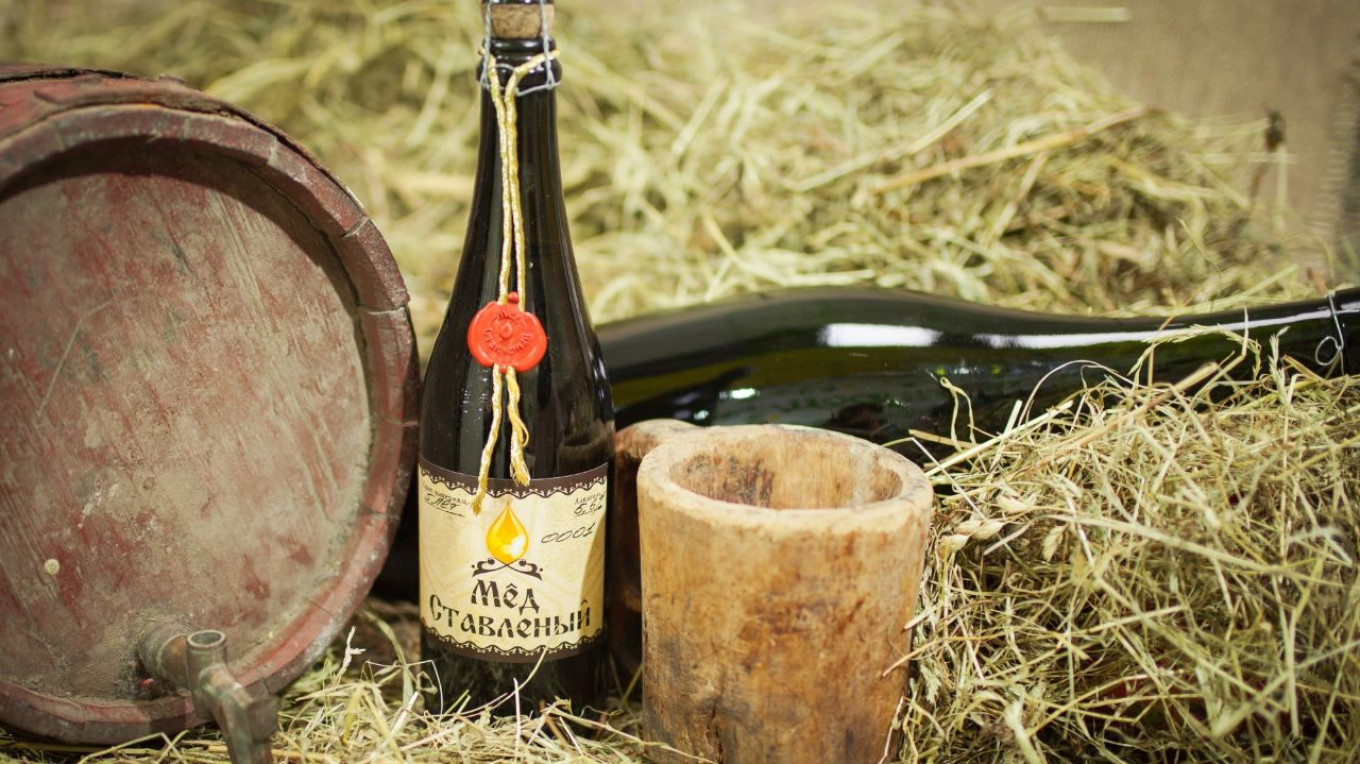
We will try a simpler recipe — after all, we just want to know what ancient mead tasted like.
First, the honey is melted: it is gently heated and water is added.
When the contents of the pot are thoroughly mixed and reach a temperature of 80°C/175°F, part of the mixture is poured into another container. This will be the starter.
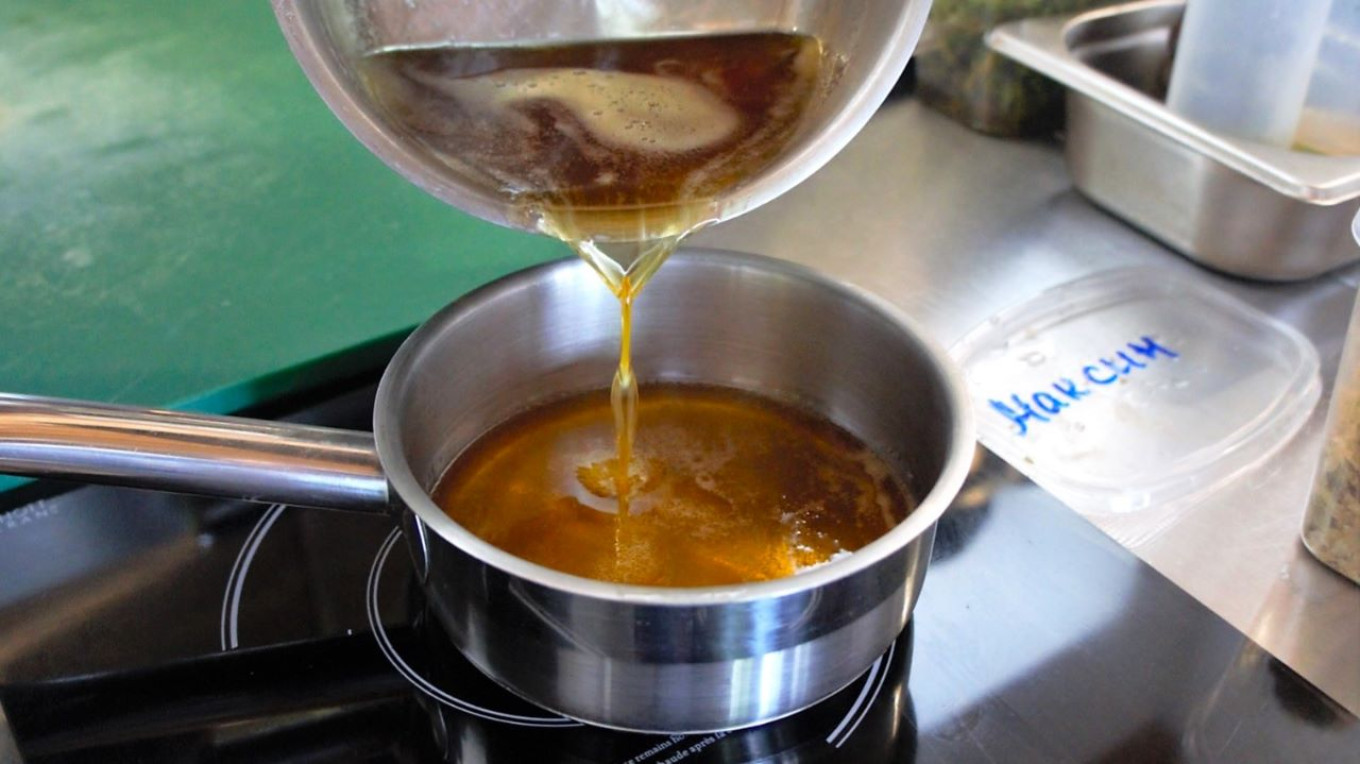
Add a little yeast and dried hops.

Meanwhile, the honey water in the main pot is brought to a boil. You need to keep it from a rolling boil and constantly skim off the foam that rises to the surface.
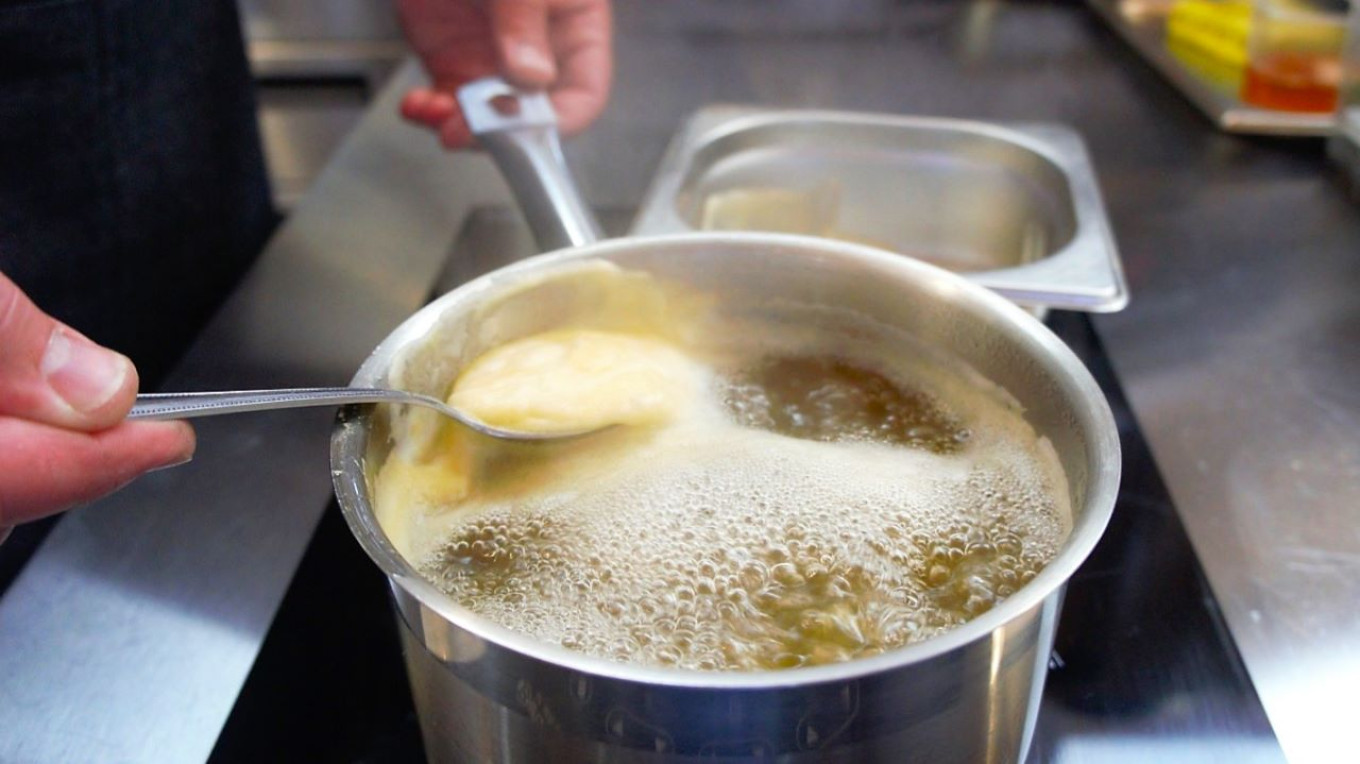
When it stops foaming, take it off the heat and let it cool slightly. Then add dried hops and a cinnamon stick.
Then we do a little trick so that we don't have to mess with a water lock. We take foil, crumple it and lay it along the rim of the pot, leaving a good amount of foil hanging over the pot on the outside. Then we close the lid, pressing it tightly against the foil, which we then pull up over the lid. In this way the lid is tight closed, but if the pressure inside builds up — this is fermentation, after all! — the pressure will make a hole in the foil and be released.
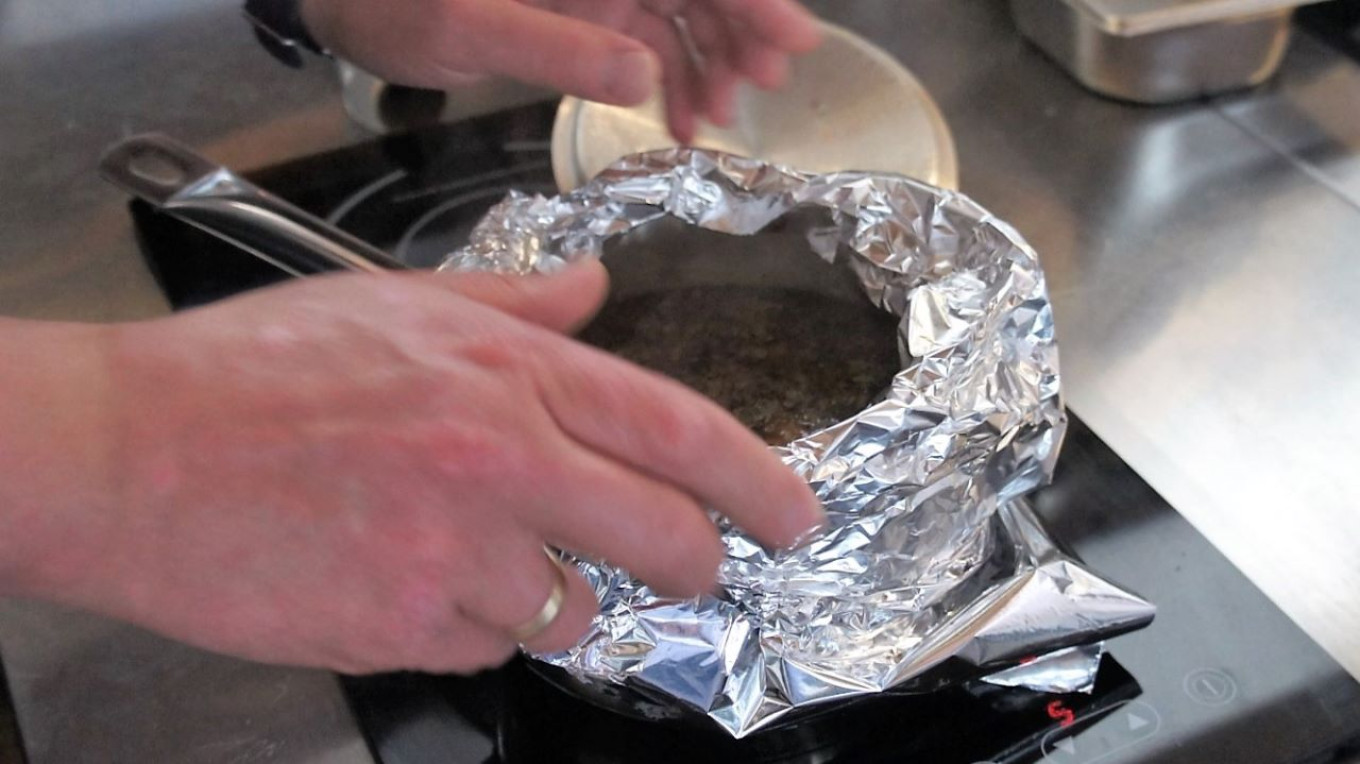
Leave it for a few hours until it cools down completely. Pour in the starter, which by this time will also have begun to do its work. Put the lid back and pull the foil up around it. Leave it at room temperature for 5-6 days. During this period, foam will appear and then settle to the bottom by the end of the process.

Then pour it into bottles sealed with bail wire swing tops and put the bottles into a cool place to mature for a couple of weeks. Then pour and enjoy!
A Message from The Moscow Times:
Dear readers,
We are facing unprecedented challenges. Russia's Prosecutor General's Office has designated The Moscow Times as an "undesirable" organization, criminalizing our work and putting our staff at risk of prosecution. This follows our earlier unjust labeling as a "foreign agent."
These actions are direct attempts to silence independent journalism in Russia. The authorities claim our work "discredits the decisions of the Russian leadership." We see things differently: we strive to provide accurate, unbiased reporting on Russia.
We, the journalists of The Moscow Times, refuse to be silenced. But to continue our work, we need your help.
Your support, no matter how small, makes a world of difference. If you can, please support us monthly starting from just $2. It's quick to set up, and every contribution makes a significant impact.
By supporting The Moscow Times, you're defending open, independent journalism in the face of repression. Thank you for standing with us.
Remind me later.



